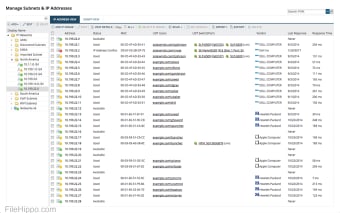Screenshots
The SolarWinds IP Control Bundle is a lovely piece software designed to make network IP conflicts a thing of the past.
In the network administration world, IP (Internet Protocol) conflicts can be a frustrating and head wrecking process, causing blood pressures to rise, and strong words to be exchanged.
While IP conflicts generally aren’t an issue for small orhome networks, in business, there can be literally thousands of different networked devices with modems, servers, phones, computers, switches, and printers all needing specific IP addresses, on the one network.
IP conflicts between just 2 single devices on a Network can cause downtime, and interfere with critical business systems.
The SolarWinds IP control Bundle does an awful lot of work to make such issues history, and turn all of the above problems to nothing more than annoying little niggles.
The ‘Bundle’ includes the integration of the SolarWinds IP Address Manager (IPAM) and the SolarWinds User Device Tracker (UDT). This allows for a comprehensive two-step resolution of IP conflicts.
The SolarWinds IP Control Bundle automatically detects IP conflicts and gives admins the exact MAC address at the root of the problem. The UDT can also locate the where the offending device is located, and that same software can be used the IT admins to shut down the offending port and isolate the device from the network.
What’s even better is that the SolarWinds Bundle can fix the conflict by using the DHCP protocols to assign the device in conflict a free address, solving the issue remotely, and saving time spent under a desk switching network cards around.
Key Features:
- Automatic IP conflict detection.
- IP address and Mac Address identification.
- Easy location finding of conflict devices.
- UDT remote use to shut down ports and isolate from networks.
- DHCP allocation of unused network addresses to solve IP conflict issues.
- Good support from designers.
SolarWinds is something of a must for IT departments, especially in one where employees start loading their own personal devices onto networks. Again, this normally isn’t too much of an issue in a single floor office, but when used on a company network of thousands, it can save invaluable time, and perhaps most crucially, a lot of money.

